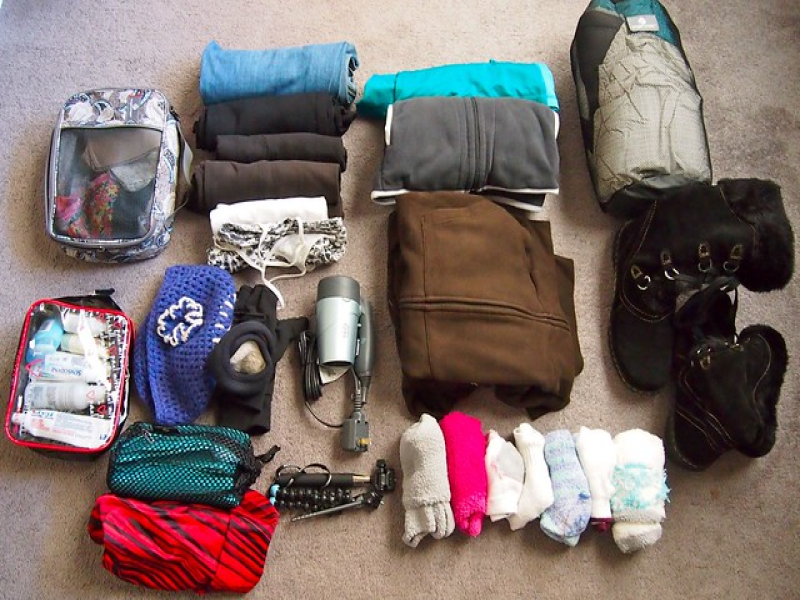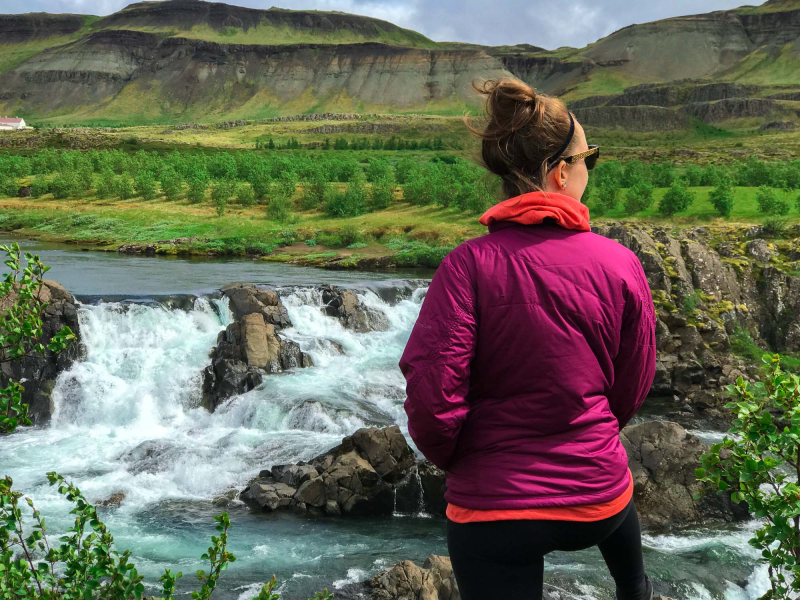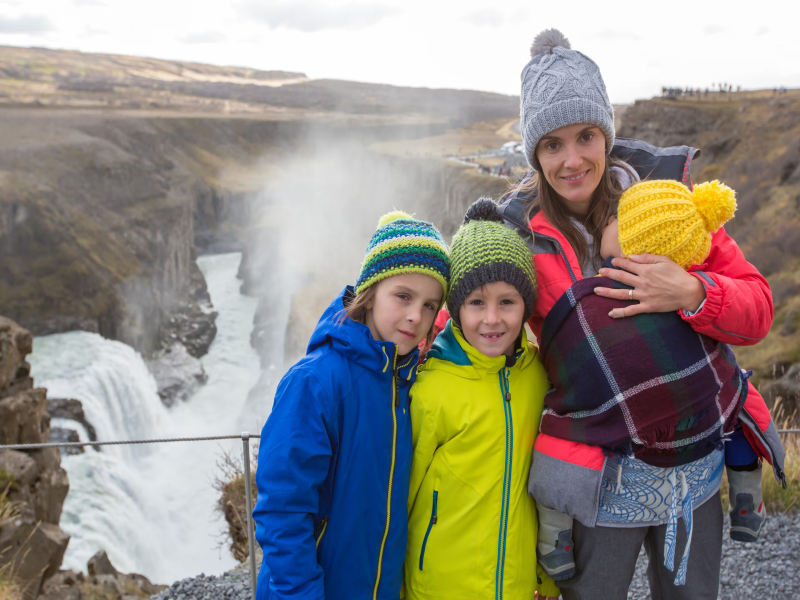Iceland known as the deluxe of Scandinavia has places of attraction ranging from;- Water falls, glaciers, hot hydrothermal springs, the wonderful northern light. But one does not have to worry much about the exterior of Iceland for like its landscapes the weather is also highly volatile and can shift from sunny, to rainy, to snowy all within the same day! That is why efficient packing is important for a nice and fun vacation to happen at the first place. It’s going to be your ultimate guide to packing for Iceland in any month of the year – everything you’ll need to know.
No matter if you have an itinerary visiting the heights of the highlands, enjoying the waters of the Blue Lagoon, or following the traces of the Northern Lights, this Iceland packing list will help to be ready for any type of undertakings. Here we will discuss basic clothing that you should not travel without, necessary accessories and equipment, and things specific to one or another season so that you can just enjoy the enchanting atmosphere of Iceland without thinking about your bags. Let’s dive in!

Essential Clothing for Your Iceland Trip
Shoes for Walking on Iceland’s Surface
Iceland has relatively complex terrains from the volcanic regions, lowlands to glaciers. Shoes are very important and really should be chosen carefully in order to avoid any discomfort.
- Hiking Boots: In case of hiking, it is recommended that the right choice of shoes would be a good quality hiking boots that are waterproof and preferably somewhat protective around the ankles. This will guard your feet and give traction where the ground is irregular and icy.
Waterproof Outerwear is a Must
Iceland is known for its precipitation, whether it’s rain, snow, or even a mix of both. Investing in a high-quality waterproof and windproof jacket and pants is essential for staying dry and comfortable throughout your trip. Look for durable materials like Gore-Tex or similar waterproof membranes. Breathability is also important to prevent overheating during activities.
Iceland packing essentials:
- Waterproof and windproof jacket with a hood
- Waterproof pants (especially if you plan on hiking or spending time outdoors)
Don’t underestimate the importance of waterproof outerwear. It can make the difference between a pleasant and miserable experience in Iceland’s unpredictable weather.
Footwear for Exploring Iceland’s Terrain
From volcanic landscapes to icy glaciers, Iceland offers a diverse range of terrains to explore. Choosing the right footwear is crucial for comfort and safety.
- Hiking Boots: If you plan on hiking, invest in a pair of sturdy, waterproof hiking boots with good ankle support. This will protect your feet and provide traction on uneven and slippery surfaces.
- Walking Shoes: For exploring towns and cities, pack a comfortable pair of walking shoes. You’ll likely be doing a lot of walking, so make sure your shoes are broken in and provide good support.
What to pack for Iceland:
- Waterproof hiking boots (for outdoor activities)
- Comfortable walking shoes (for city exploration)
Always don’t forget that your feet will help you get through your Icelandic adventure so you must look after them!
Here What You Should Not Forget!
You will realize that small accessories do count, particularly when traveling to Iceland where the chilly weather is quite penetrative.
Iceland packing list:
- Warm hat: The courtesy of a wool or fleece hat is that you will cover both your head along with your ears if the climate is freezing.
- Gloves: Mitten or waterproof gloves must be worn in order to protect the hands from getting wet and cold.
- Scarf: Wearing a thick scarf maybe useful to protect the neck from cold that’s accompanies by a windy climate.
- Thick socks: I like woolen or synthetic material for socks since they don’t make the feet moist, especially when hiking or outdoors.
These accessories are not very conspicuous but are very important when it comes to dressing for Iceland weather.
Essential Gear for Your Iceland Adventure
Besides clothing, there is a piece of gear that can make, or at least, will make your Iceland trip even better and help to avoid some of the trickeries of the country.
The Insulation and Rain Protection for Iceland Rain and Snow
Despite a proper raincoat and being dressed in warm clothing, several places in Iceland will surely leave tourists wet. Here are a few extra items to pack:
- Quick-drying towel: This is particularly important if you intend to bathe in hot springs or swimming pool, the most common things to do in Iceland. An ideal towel should be one that can dry quickly and has the ability to fit in your luggage hence, no more wet feelings.
- Waterproof backpack cover: Carry your belongings in waterproof backpack, and it will be good to use a waterproof backpack cover in case of rain. This will ensure your camera, electronics and other valuables remain dry even in cases of a heavy down pour.
Capturing Iceland’s Beauty
Iceland is incredibly beautiful and the countryside will not disappoint, you will want to make sure that you take pictures. Here’s what you might need:
- Camera: As a key step in production, good camera is required when shooting on Iceland. It doesn’t matter if you are using a DSLR camera or a mirrorless camera or even an iPhone with a fantastic camera – ensure you have a way of capturing the moment.
- Additional camera gear: It may be useful to bring more batteries, memory cards, and lenses for photographic enthusiasts particularly if you don’t want your shoot interrupted by breaks to change batteries, cards, or lens. And yes, a tripod might come in handy for those Northern Lights pictures or a long exposure landscape shot.
Navigating Iceland with Ease
Although, the Iceland roads are in very good condition, it is challenging to get off the beaten track. Here’s what can help:
- Map and compass: GPS is handy but still there is nothing like having a physical map and compass in your pocket particularly if you are hiking or in a new territory.
- Offline maps: Maps can also be downloaded for offline use on your phone using other applications such as Google Maps or Maps.me. This will make certain that you have the functionality of navigation even when you do not have the internet connection.
- Portable charger: Make sure your electrical appliances are charged with a portable charger. This is especially the case if you depend of the phone for navigation or taking a photo or something like that.
Extra Option that can be used for some Activities
For some of the intended activities you may require some more equipment.
Packing list for Iceland:
- Hiking: A bottle of water, lunch, first aid kit, map, proper shoes and clothing, backpack with snacks or extra clothing, a map, compass or GPS, GPS watch, camera and binoculars, spare batteries, hiking poles, headlamp, sunglasses, trekking poles, flashlight, sunscreen, insect repellent, feet care items, hand sanitizer, canteen with water, snacks or trail mix, sunglasses, waterproof bags or box.
- Camping: These include tent, sleeping bag, cooking equipment as well as camping stoves.
- Swimming: Swimsuit, towel and flip flops for use during the hot springs and pools sessions.
- Winter activities: Ice spikes for the soles of shoes when a person needs to walk on ice and ski goggles to reduce the impact of strong wind and flying snow.
Therefore, if you are to review the schedule that you have in mind or activities you intend to perform during the trip, could point you to the things that you must pack for safe and worry-free travels.

Packing Essentials for Every Season
All the above packing tips are generally relevant for packing for Iceland but there is a few things to consider depending on the season.
Summer in Iceland: Midnight Sun and Long Days
Iceland boasts of summer from June to August and domestics florescence since it hardly gets dark in some parts of the country. Still, it should be stated that despite rather moderate temperatures, Iceland is a Northern country.
What to pack for Iceland in summer:
- Layers: Despite the hot summer, pack clothes that are a little thick, for evenings and the high altitudes in particular.
- Sunglasses: Sometimes you may find that it bright and sunny even at midnight, complexions require you to pack sunglasses for eye protection.
- Sunscreen: Don’t forget sunscreen! This means that even on a cloudy day one can potentially get a high level of uv index in Iceland.
- Insect repellent: Flies or mosquitoes may be common at some places during summer though they are responsive to changes in weather.
Winter in Iceland: Northern Lights And Cozy Nights
December through February is generally winter in Iceland and it associates with many things: fewer daylight hours, snow all around, and of course, the Aurora Borealis. But it is also associated with bitter cold and ice.
What to pack for Iceland in winter:
- Warm layers: Bring thick clothing, particularly woolen vests, warm tracksuit, and warm coat for a chilly place.
- Insulated clothing: Insulated pants should be purchased as well as a waterproof and insulated jacket.
- Ice cleats or crampons: These are needed for navigating on slippery pavements and walks most especially during winters.
- Headlamp: You might need a headlamp useful if you are going to observe the Northern Lights ; it will help you move in the dark.
Shoulder Seasons (Spring and Autumn): Unpredictable Weather
Both Ostur and vor (March to May and September to November) are transitional seasons in Iceland, with regular fluctuation in climate.
Packing for Iceland in spring/autumn:
- Versatile layers: The best clothing an individual should wear is different layers so that in case of a change in the temperatures and other related WEATHER conditions are expected.
- Waterproof outerwear: It rains or snows in these seasons, so carrying raincoat and trousers will come in handy.
- Sturdy footwear: Hiking boots must be selected in a way that the same footwear works as an umbrella or a shoe.
Iceland is fairly unpredictable so no matter the time of the year, expect that you will encounter almost any kind of weather. The idea of flexible packing is the best way to travel comfortably successfully.
Tips for Efficient Packing
In this article, we’ll take a look at some of the key do’s and don’ts for packing for your next departure so that you can arrive at your destination with all your gear in one piece and with nothing more than what you need.
Pack Light and Smart
Iceland’s weather is quite volatile but having your whole clothing is not necessary or ideal. Consequently, it is wiser to concentrate on numerous items that fit freely with others to provide different brands. That makes it easier to co-ordinate as compared to bright colored clothing articles such as reds, greens, blues etc.
- Rolling clothes: Instead of folding your clothes, you can roll them as a way of storing and the method also helps to avoid creasing.
- Choose quick-drying fabrics: If by any chance these fabrics get wet, they will dry up faster, and you can wear them again.
- Limit shoes: Clothing is often bulky to pack, but try not to bring more than two or three pairs of footwear: sturdy hiking boots, walking shoes, perhaps water shoes /flip-flops if you intend on going to onsens.
Utilize Packing Cubes
A traveler’s organized packing buddy, packing cubes are a wonder. It can be used as small fabric containers that help you arrange your luggage and push your clothes in order to shrink them.
- Categorize items: To separate your clothes try to utilize packing cubes of different colors to correspond to different types of garments like tops bottoms, and undergarments.
- Compress clothing: Packing cubes are designed to compress your clothes, in a way that can help you fit more into the suitcase.
- Easy access: They help to pack your cloths neatly and they also allow you to search for a particular cloth without having to unpack your suitcase.
Don’t Forget a First-Aid Kit
Getting injured is not desirable but out of the blue it is possible to have an accident, so it is better to be prepared and take a first aid kit with you. Include essentials like:
- Band-aids: For minor cuts and scrapes.
- Pain relievers: Advertisement drugs which are available without a prescription such as ibuprofen or acetaminophen.
- Antiseptic wipes: For cleaning wounds.
- Blister treatment: Hoofing up blisters means carrying blister plasters or moleskin with you.
- Any personal medications: It is wise to do a stock check with regards to prescription medicines for anyone in the household who has been prescribed to by their doctor to get some.
Even though every traveler knows that there must be no excess luggage, it’s possible to be smart and avoid the stress of carrying too many things that you will not use while having a great and fun time exploring Iceland.
What NOT to Pack for Iceland
Nevertheless, there is some equipment that we should expect while traveling to Iceland despite the climatic shockers, some things can actually be left behind.
Leave These Items at Home
- Formal wear: If you don’t have a social event to attend where you have to dress up, avoid dressing up like you are going to a black-tie event. Iceland is not glamour and you would be better off dressed pretty comfortably.
- Excessive electronics: Reduce your use of the gadgets as much as possible, since they are an easy distraction during work or study time. I think you will need to be there and appreciate the magnificent scenery of Iceland without interference.
- Bulky or heavy items: MIght is purely prohibited hence no need for cumbersome equipment that will make you uncomfortable to move around.
- Umbrella: Weather of Iceland may make umbrella almost useless. Waterproof jacket with a hood is much better option of selecting for ur journey,,,,,
Check for Restricted Items
Plastic bag However when planning for a trip to Iceland for whatever reason, ensure to do your research on the various prohibited items when packing. Some common restrictions include:
- Fresh produce: He said that animal and poultry products are allowed while fruits, vegetables, and plants may be banned for importation to avoid bringing in pests and disease.
- Meat and dairy products: These are also restricted for use for biosecurity.
- Weapons: Fire arms, knives and unauthorized weapons are strictly prohibited in the school.
If you focus on the things that must not be packed, then you can do away with several problems that may arise when you are packing as well as at customs.

Conclusion
Traveling to Iceland doesn’t have to be a daunting affair when deciding on what to pack. By following this guide, no circumstance should arise where you are unprepared or unable to enjoy your visit no matter the season. So everybody should think about layering, water resistant outerwear, and strong shoes. A very good trick is packing smart, using packing cubes and of course let’s not forget accessories.
Most important of all, be advantages and be ready for anything that you will encounter in Iceland! And that my dear readers is the moment when having proper attitude, your suitcase filled with your wanted items, you can begin the journey through the land of fire and ice and make memories that will be unforgettable.
Therefore prepare your Icelandic vacation, take the necessary gear with full assurance and get set first and get ready for that.)
References:
- Guide to Iceland: www.guidetoiceland.is – A comprehensive travel guide with information on everything from attractions and activities to accommodation and transportation.
- Vedur.is: www.vedur.is – The official website of the Icelandic Meteorological Office, providing up-to-date weather forecasts and warnings.
- Icelandic Customs: www.tollur.is – The official website of the Icelandic Customs, with information on customs regulations and restricted items.




